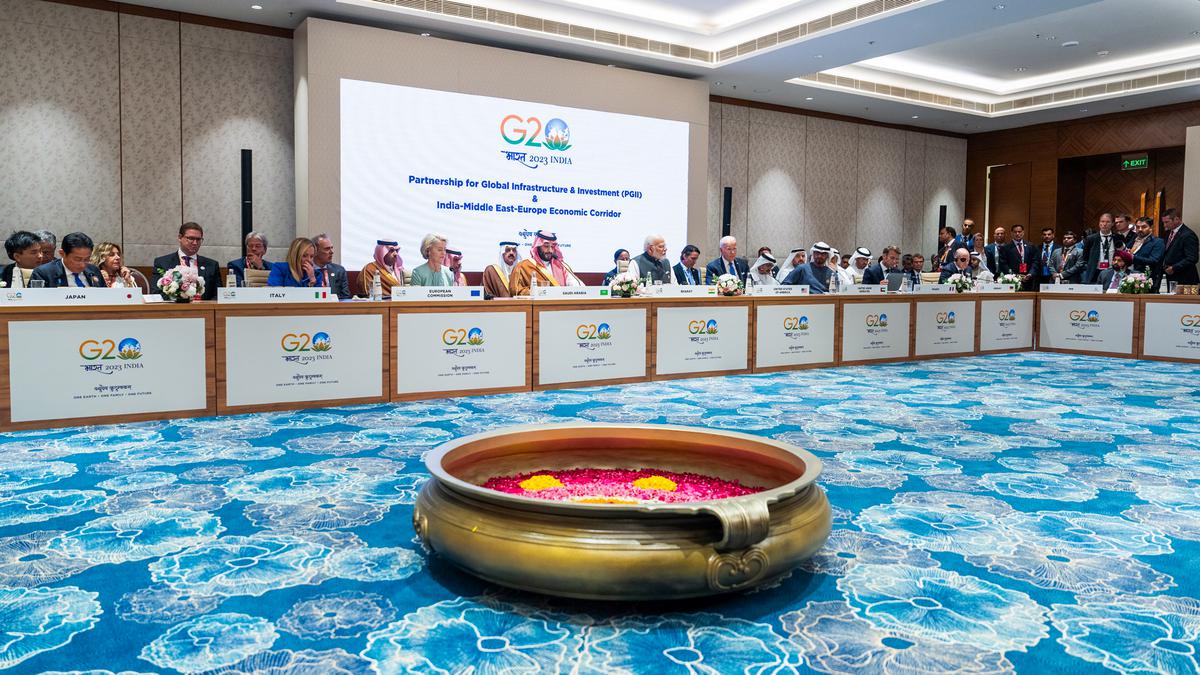Context:
At the G-20 summit in New Delhi earlier this month, United States President Joe Biden and others unveiled a U.S.-backed infrastructure project to connect India, West Asia and Europe with shipping lanes, rail networks, pipelines and data cables.
Two-part policy:
- Mr. Biden’s West Asia strategy has two parts. One is the continuation of the Trump-era policy of bringing America’s two pillars in the region — the Gulf Arabs and Israel — closer to meet their common geopolitical challenges such as Iran’s rise.
- The second part of Mr. Biden’s approach is to reassure America’s friends and allies that the U.S. is not exiting West Asia.
- In 2012, leaders of India, Israel, the U.S. and the UAE held a virtual summit of what is now called the I2U2 minilateral.
- The idea behind I2U2 is to create a new platform that could expedite economic integration between West Asia and South Asia and offer economic and technological solutions to the problems faced by the Global South.
- India’s presence in a grouping of the Abraham Accords countries was seen as a legitimate recognition of India’s presence in the region.
- The India-Middle East-Europe Corridor, announced at the G-20 summit enhances New Delhi’s standing.
- It seeks to build an economic corridor from India’s western coast, through the Gulf (the UAE and Saudi Arabia), Jordan and Israel, to the Mediterranean, bringing India and Europe closer.
- If this project takes off, the U.S. hopes that it could retain its channels of influence in West Asia, control the major shipping lanes and reassure its allies of its staying capacity.
- America’s answer to this challenge is to forge closer ties between its allies in the region and strengthen the U.S. security architecture, and bring India in as a bigger, stable partner to write the new rules of economic engagement and integration, competing with China. India seems willing to take this bet.
Multiple avenues for India:
- For India, the U.S.-China competition in West Asia opens new avenues of engagement.
- The U.S. sees India, with its size, the size of its economy and the legacy of its historical engagement and cultural connect with the region, as an important partner in its bid to continue to shape West’s Asia’s geopolitics.
- India should welcome the moment but should not look at it through the prism of another Cold War — or it should not put all its eggs in one basket as it did in Afghanistan.
- It is already part of the near-functional International North-South Transport Corridor that connects India to Russia through Iran and Central Asia.
- The ‘Middle East Corridor’ would open another economic channel.
Way forward:
- India’s overall policy towards the region should stay anchored in this idea of multi-engagement — not in appeasing or containing any great power.
- With or without the U.S., or irrespective of China’s presence in the region, India should strive to play a major geopolitical role in West Asia, its extended neighbourhood, without upsetting its traditional balance.

.jpg)
.jpg)
1.jpg)
Comments (0)